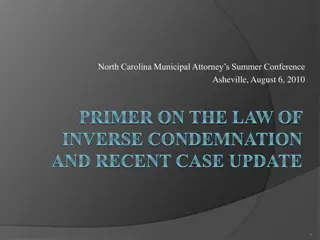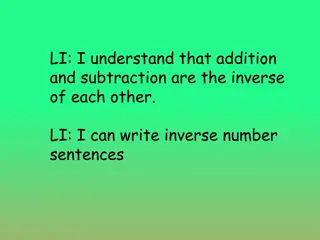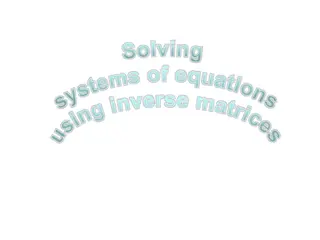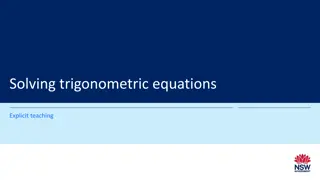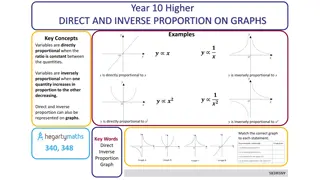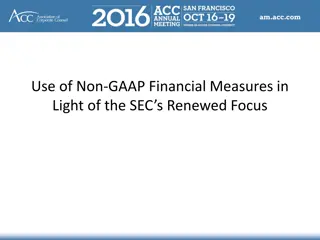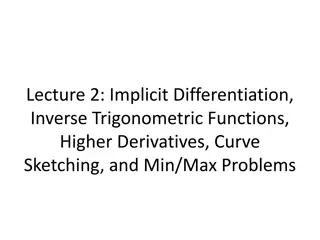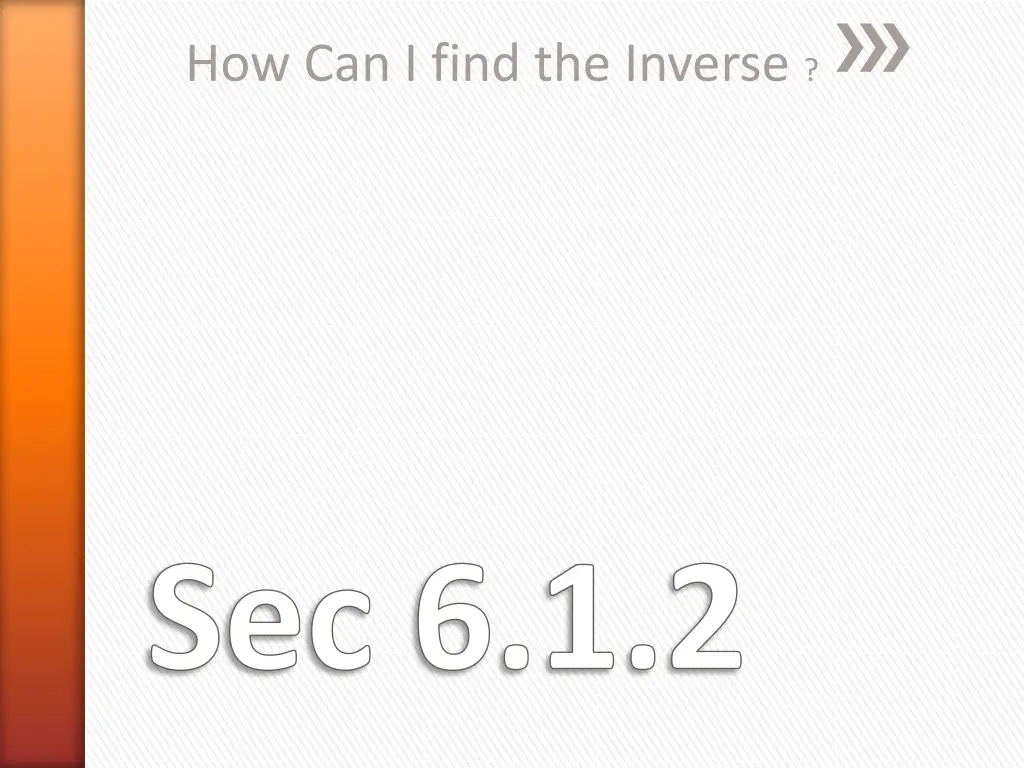
Understanding Inverses of Functions
Explore how to find the inverse of functions, graph the relationship between a function and its inverse, identify the line of symmetry, and use visual techniques to draw the inverse graph accurately. Learn practical methods to graph the inverse and verify the results using mathematical tools.
Download Presentation

Please find below an Image/Link to download the presentation.
The content on the website is provided AS IS for your information and personal use only. It may not be sold, licensed, or shared on other websites without obtaining consent from the author. If you encounter any issues during the download, it is possible that the publisher has removed the file from their server.
You are allowed to download the files provided on this website for personal or commercial use, subject to the condition that they are used lawfully. All files are the property of their respective owners.
The content on the website is provided AS IS for your information and personal use only. It may not be sold, licensed, or shared on other websites without obtaining consent from the author.
E N D
Presentation Transcript
How Can I find the Inverse ? Sec 6.1.2
Find the inverse of each function: ? =2?+5 3 ? = 5(? 1)2 12 ? = (? + 7)3+6 What do you remember?
For each graph make a careful graph of each undo rule on the same set of axes as its corresponding function. Make a statement about the relationship between the coordinates of a function and the coordinates of its inverse. Use table of values for the function and its inverse to show what you mean. 6-16
When you look at the graph of a function and its inverse, you can see the a symmetrical relationship between two the two graphs demonstrated by the line of symmetry. Draw the line of symmetry for each pair of graphs. Find the equation of line of symmetry. Why do you think the line of symmetry makes sense. 6-17
The line of symmetry you identified in problem 6-17 can be used to help graph the inverse of a function without creating a x-y table. 2 ? 2 A. Graph y= paper. Scale the x- and y-axes the same way on your graph. carefully on a sheet of graph 6-18 a
B. On the same set of axes, graph the line of symmetry of y=x. C.With a pencil or crayon, trace over the curve until the curve is heavy and dark. Then fold your paper along the line y = x, with the graphs on the inside of the fold. Rub the graph to make a "carbon copy" of the parabola. 6-18 b,c
d. When you open the paper you should see the graph of the inverse. Fill in any pieces of the new graph that did not copy completely. Justify that the graphs you see are inverses of each other. 6-18 d
Your grapher can also help you to graph the inverse of a function. Check your inverse graph from problem 6 18 by following your teacher's instructions to use the "DrawInv" feature of your grapher. Was the inverse graph that you drew correct? 6-19
a) Find the equation of the inverse of ? = (? 2)2 b) Is there another way you could write it? If so, show how the two equations are the same. c) Justify that your inverse equation undoes the original function. 6-20
Consider your equation for the inverse of ? = (? a. Is the inverse a function? How can you tell? 2)2. b. Use color to trace over the portion of your graph of for which x >0 . Then use another color to trace the inverse of only this part of ? = (? function? 2)2. Is the inverse of this part of a 6-21
Consider your equation for the inverse of ? = (? 2)2. c. Find a rule for the inverse of the restricted graph of . How is this rule different from the one you found in problem 6 20? 6-21
Consider the function: ? ? = (? 3)2 a) How could you restrict the domain of f(x) so it inverse, f-1(x)will be a function? 6-22 a
Graph f(x) with its restricted domain and then graph its inverse, f-1(x) on the same set of axes. 6-22b
Is there a way to look at any graph to determine if its inverse will be a function? Explain. Find examples of other functions whose inverses are not functions. 6-23
Use graphs to find the inverses for the following functions. Label the graph of each function and its inverse with equation. 6 24?) ? = 5(? 2) 6 24?) ? = 1 +2 ? 6-24
Look at the graph (page 269) of a function and its inverse. If p(x) is a function and q(x) is its inverse, can you tell which is which? Why or why not. y 9 8 7 6 5 4 3 2 x 1 -9 -8 -7 -6 -5 -4 -3 -2 -1 1 2 3 4 5 6 7 8 9 -1 -2 -3 -4 -5 -6 -7 -8 -9 6-25
Review and Preview Page 270 # 26-37 Review your notes. Rewrite and fortify them if needed. Update your vocab list, if needed. On your own:




